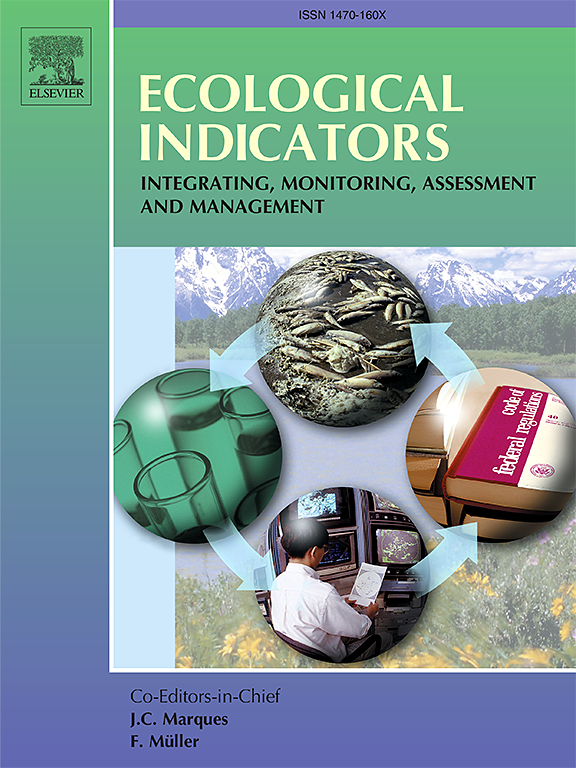Spatiotemporal evolution and driving forces of ecosystem service values in the Yellow River Delta
IF 7
2区 环境科学与生态学
Q1 ENVIRONMENTAL SCIENCES
引用次数: 0
Abstract
Natural protected areas, as critical foundations for China’s ecological security, play an irreplaceable role in maintaining ecosystem services. Investigating the spatiotemporal evolution and driving factors of ecosystem service values (ESVs) in natural protected areas is essential for policymakers to develop scientific strategies that promote sustainable development. This study focused on the Yellow River Delta to analyze the spatiotemporal evolution, interrelationships, and driving factors of ESVs in coastal areas and areas along the Yellow River. The results indicated that: From 2000 to 2023, ESVs in both coastal areas and areas along the Yellow River showed a steady upward trend, with obvious characteristics of spatial distribution differences, in which the coastal areas have the highest ESV, followed by the areas along the Yellow River, and lastly the non-coastal zone and non-Yellow River areas. The Shell Island and Wetland National Nature Reserve demonstrated a high water conservation value, while the Yellow River Delta Nature Reserve (Yellow River estuary) exhibited a high soil retention value. In addition, the interrelationships between different ESVs showed significant spatial differences, and although the areas along the Yellow River typically exhibited stronger ESV synergies than coastal areas, the occurrence of high − high synergies was more common in the coastal areas. Wetland area had been identified as the primary driving factor for ESV changes in coastal areas, with changes in reservoir pit area having a significant effect on ESVs. For areas along the Yellow River, the main driving factors had included river area, reservoir pit wetland area, DEM, the area of natural protected areas, and fram yield. In overlapping areas, the main driving factors for ESV changes had been per capita disposable income and DEM.

求助全文
约1分钟内获得全文
求助全文
来源期刊

Ecological Indicators
环境科学-环境科学
CiteScore
11.80
自引率
8.70%
发文量
1163
审稿时长
78 days
期刊介绍:
The ultimate aim of Ecological Indicators is to integrate the monitoring and assessment of ecological and environmental indicators with management practices. The journal provides a forum for the discussion of the applied scientific development and review of traditional indicator approaches as well as for theoretical, modelling and quantitative applications such as index development. Research into the following areas will be published.
• All aspects of ecological and environmental indicators and indices.
• New indicators, and new approaches and methods for indicator development, testing and use.
• Development and modelling of indices, e.g. application of indicator suites across multiple scales and resources.
• Analysis and research of resource, system- and scale-specific indicators.
• Methods for integration of social and other valuation metrics for the production of scientifically rigorous and politically-relevant assessments using indicator-based monitoring and assessment programs.
• How research indicators can be transformed into direct application for management purposes.
• Broader assessment objectives and methods, e.g. biodiversity, biological integrity, and sustainability, through the use of indicators.
• Resource-specific indicators such as landscape, agroecosystems, forests, wetlands, etc.
 求助内容:
求助内容: 应助结果提醒方式:
应助结果提醒方式:


